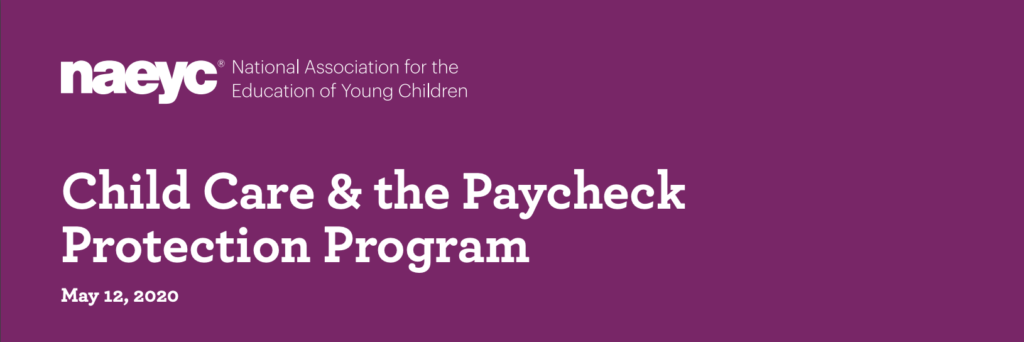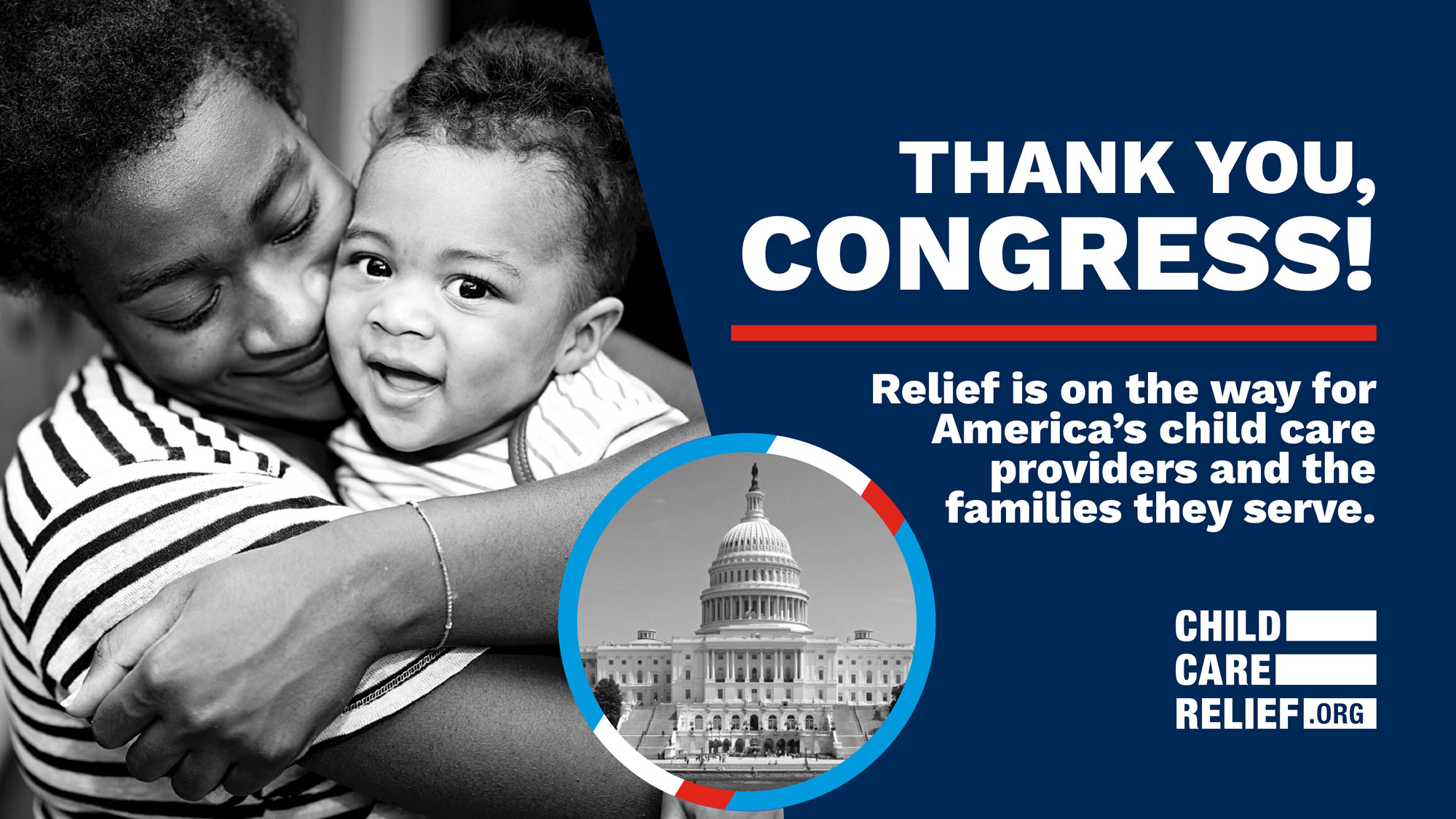
Child Care Providers Face Challenges in Accessing Paycheck Protection Program
The following data and information is from the results of a new survey conducted by the National Association for the Education of Young Children.

Small businesses are at the heart of the American economy, and the child care industry is at the heart of small businesses—as a support for the leaders and parents who run and work in them, and as a source of small businesses themselves. The child care system, which thrives on multiple types of programs and settings that meet parents’ and children’s needs, primarily consists of small centers and family child care homes run by
women, often women of color. According to the Committee for Economic Development, there are approximately 675,000 child care businesses in the United States.
Significant steps have been taken by Congress to assist small businesses of all kinds during the pandemic, including the creation of the Paycheck Protection Program (PPP). In the time since the program’s creation, the National Association for the Education of Young Children (NAEYC) has conducted webinars and created resources for educators and program owners, supporting them to learn more about and apply for the PPP opportunity.
NAEYC’s survey report from April 17 found that, of 5,000 respondents, 53% of child care centers and 25% of family child care homes had applied for the PPP loan. Additional programs have likely applied since that time; others have chosen not to apply because of expressed concerns around the risk of taking on debt in the context of an uncertain future. Of the programs who had applied, nearly 500, from 42 states and Washington, DC responded to a follow up survey seeking to learn more about their experience with the Paycheck Protection Program. In this slice of the child care industry, we can see that while the PPP has bought some programs critical time with which to pay themselves and their employees and cover some of their fixed costs, entire segments of the market, particularly family child care homes, have been essentially unable to access the program and its benefits. Additional, substantial, direct federal relief is needed to ensure child care exists and is available to support children’s learning and families’ return to work over an extended period of time.
Key Findings
- Of the half of child care programs who reported that they applied for the Paycheck Protection Program, half of those were approved for the loan; this would be equivalent to approximately one-quarter of the child care market receiving PPP loans.
- At the time of their response, 12% of those who had applied had been denied and another 33% had not heard back yet.
- Of those who were denied, 55% were family child care home.
- The most common explanations programs were provided for their denials, in addition being told there was a lack of funding, included problems with their credit scores and their lack of a business checking account (even if they had a personal account)—neither of which are required by the SBA to qualify for the loans.
- Rates of approval were slightly higher for borrowers who were previous clients of their lender (57% approval rate for previous clients vs. 49% approval rate for applicants who were not).
- For family child care homes, approval rates were lower regardless of previous client status; if they were clients, they confronted a 27% approval rate, while those who were not previous clients saw a 23% approval rate.
- Reflecting the range of small business settings and size in the child care field, the amount of the loans varied significantly:
- 38% of respondents reported that their loan amounted to less than $50,000
- 25% reported that it amounted to between $50,000 and $100,000
- 30% reported that it amounted to between $100,000 and 150,000
- 6% reported that it amounted to between $250,000 and $500,000
- All of the family child care homes reported a loan amount of $50,000 or less.
Ensuring forgiveness for the programs who received the loan will be the next challenge; many child care providers, even those who ultimately applied in the hopes of saving their businesses so they could continue to serve children and families in their communities, expressed deep concerns about the risks of taking on debt, and were fearful that the loans would not be forgiven.
To the extent that additional funding and policy changes are coming for the Paycheck Protection Program, NAEYC encourages Congress and the Small Business Administration to make these funds increasingly available to true small businesses, such as family child care homes, who are sole proprietors and may be unbanked, and to provide guidance to the banking industry clarifying expectations around loan and forgiveness requirements. At the same time, even a fully functional and funded Paycheck Protection Program would not be enough to sustain the existence of the mixed-delivery child Care system that is needed to support the nation’s response to disaster and road to recovery. The viability of child care programs—and therefore the viability of our nation’s economy—is dependent on substantial, additional, and direct investments, and we look forward to working with Congress to make these investments a reality.
